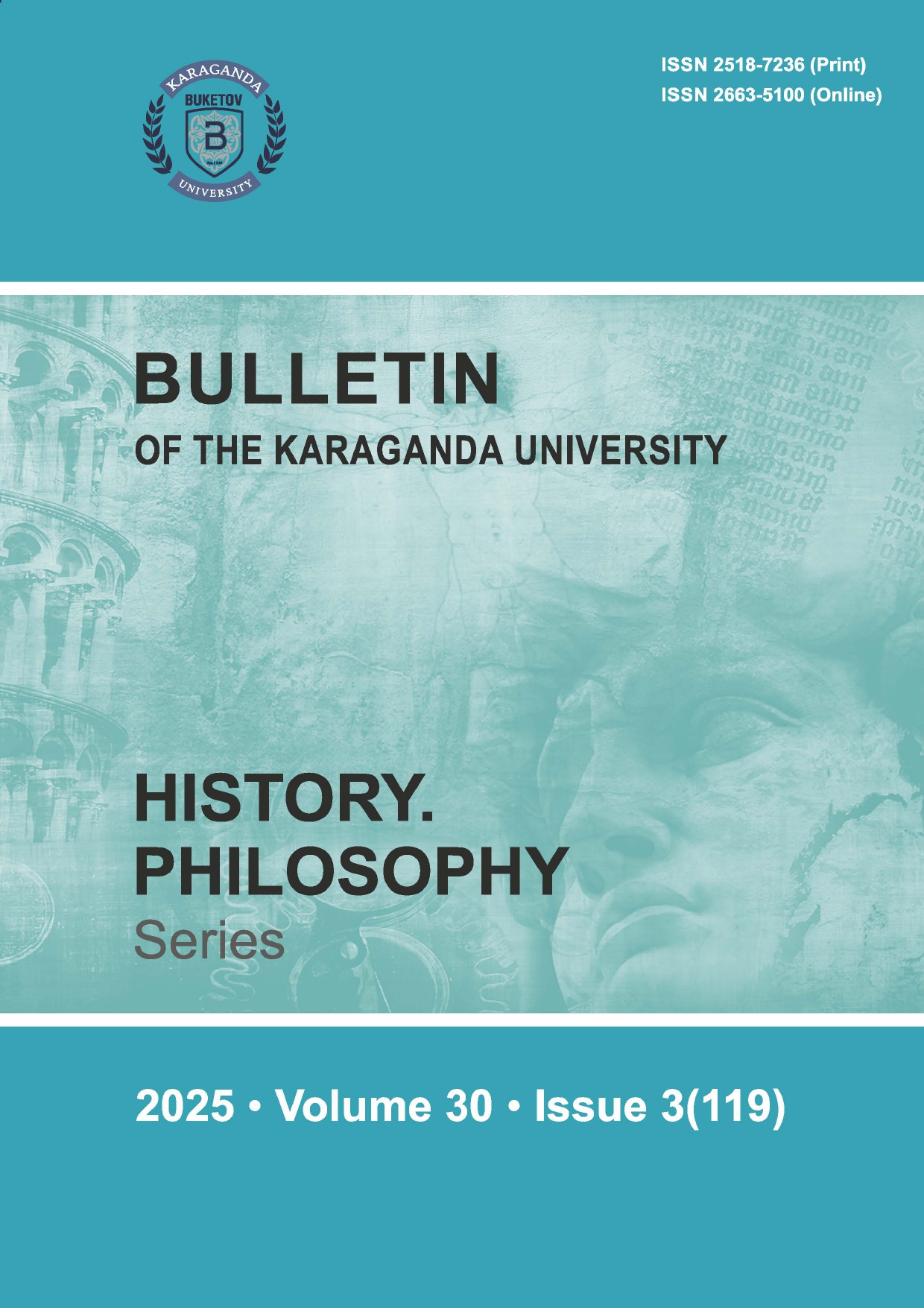Commonalities and Particularities in the Fates of “Atomic Soldiers” in the USSR and the USA: A Historical Overview
DOI:
https://doi.org/10.31489/2025hph3/181-191Keywords:
test sites, nuclear tests, atomic soldiers, radiation, consequences of nuclear testing, Semipalatinsk nuclear test site, Novaya Zemlya, Nagasaki, Soviet Union, Totsk polygonAbstract
The article addresses a topic that has not previously been studied in Kazakhstani historiography. The article addresses a topic that has not previously been studied in Kazakhstani historiography. Its focus is on veterans who served at nuclear test sites in the United States and the USSR during the second half of the 20th century — the so-called “atomic soldiers.” Young conscripts, who believed they were fulfilling their duty to the Motherland, in reality became “atomic soldiers” within the framework of their states’ nuclear policies. The primary sources for studying the fates of these “atomic soldiers” are previously recorded interviews and memoirs of those who served in the armed forces of the USSR and the USA. Of particular importance are interviews with Kazakhstani “atomic soldiers” who were stationed at the Semipalatinsk nuclear test site. The
collected evidence shows that in both the United States and the Soviet Union, service members involved in nuclear tests were often unaware of the nature of radiation exposure and were not provided with protective equipment or radiation monitoring devices. Testimonies from American veterans and Soviet participants indicate a wide range of health consequences — from skin lesions and cancers to paralysis and psychological trauma. The study also reveals that in Belarus and Russia, veteran organizations began to emerge in the 1990s, engaging in publishing memoirs and campaigning for recognition of their status. In Kazakhstan, however, public discussion of this issue has only begun in recent years. In Kazakhstan, however, public discussion
of this issue has only begun in recent years.




